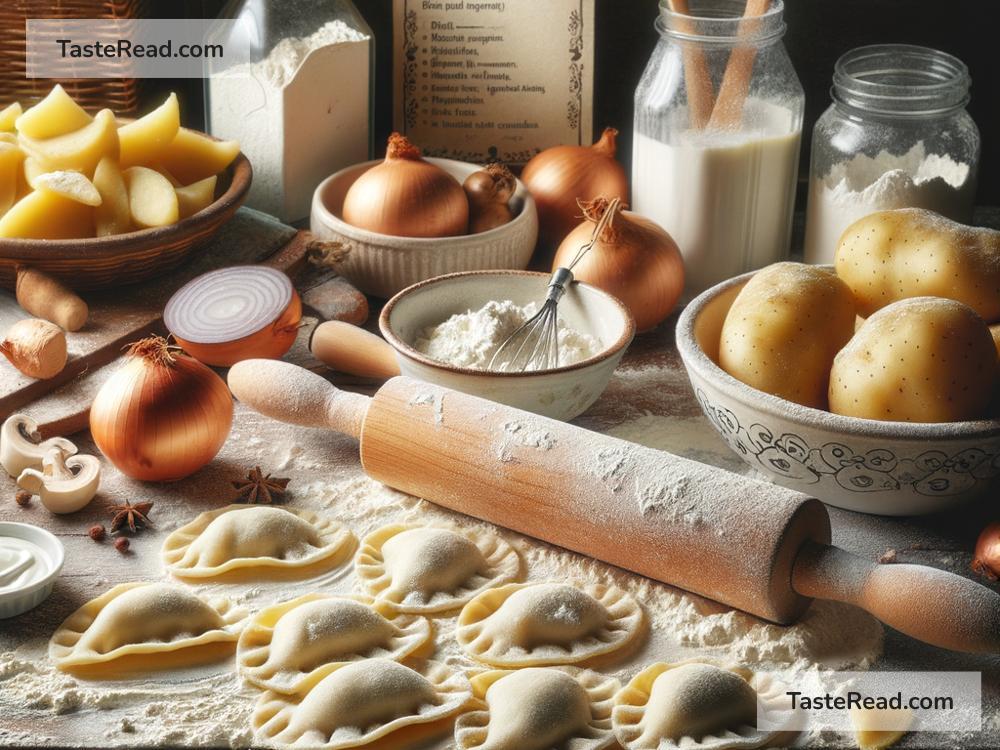Pierogi: A Taste of Polish Tradition
Polish pierogi are small dumplings filled with various ingredients, ranging from savory to sweet. They are not just a dish but also a symbol of home, family, and tradition. Over the years, pierogi have become popular around the world, but in Poland, they hold a special place in the hearts of locals. In this blog, we will talk about the history of pierogi, some popular recipes, and how they bring families together.
What Are Pierogi?
Pierogi (pronounced “pyeh-ROH-gee”) are soft dough dumplings filled with different types of stuffing. The dough is made with flour, water, eggs, and sometimes a little salt. After preparing the dough, small circles are cut out and filled with a variety of mixtures. Once folded and sealed, the dumplings are cooked in boiling water and sometimes fried in butter to give them a golden crust.
Pierogi are easy to make and can be customized to fit everyone’s taste. They are enjoyed as a main meal, side dish, or even dessert. These little dumplings are versatile, which may explain why they have become a favorite in many homes.
The History of Pierogi
Pierogi have been around for centuries. Many believe they came to Poland from Asia, but today they are seen as a Polish culinary treasure. In older times, pierogi were served during special events like holidays, weddings, and family gatherings. Different types of pierogi were prepared depending on the celebration.
For example, during Christmas Eve dinner, Polish families often eat pierogi filled with sauerkraut and mushrooms. This dish is part of the traditional meat-free meal served on this special night. On the other hand, sweet pierogi filled with fruits or sweet cheese are often enjoyed as dessert during summer or other festive occasions.
Popular Pierogi Fillings
Making pierogi is all about what you choose to put inside. There are endless possibilities, but here are some of the most popular pierogi fillings:
-
Potato and Cheese (Ruskie Pierogi):
This is the most famous type of pierogi. It is filled with a mixture of mashed potatoes and farmer’s cheese, sometimes seasoned with pepper or onion. It’s comforting, rich, and loved by all. -
Sauerkraut and Mushrooms:
These pierogi have a tangy and earthy flavor thanks to the sauerkraut and mushrooms. This filling is perfect for winter holidays and pairs well with a buttery topping. -
Meat:
Pierogi stuffed with minced meat are another popular option. Polish cooks often use leftover roast or stew meat for the filling, making this dish a tasty way to reduce food waste. -
Sweet Cheese:
For a dessert option, pierogi stuffed with a mix of cream cheese, sugar, and vanilla are a delightful treat. They are often topped with sour cream or fruit syrup for extra sweetness. -
Fruits:
During the summer, pierogi filled with fresh fruits like strawberries, blueberries, or cherries are a refreshing choice. They are usually boiled and topped with a touch of sugar or cream for a perfect balance of tart and sweet.
Family Traditions Around Pierogi
In Poland, making pierogi is more than just cooking—it is a cherished family tradition. Many families come together in the kitchen to make pierogi, especially before holidays. Rolling out the dough, preparing the fillings, and sealing the dumplings is usually a group effort. Grandparents often teach the younger generations how to make pierogi, passing down their tips, techniques, and secret recipes.
Pierogi-making sessions are full of laughter and conversation. Older family members share stories while everyone works together. This tradition helps build strong bonds and keeps Polish heritage alive.
Eating pierogi is also a communal experience. Families sit together to enjoy their hard work, savoring the delicious flavors and sharing memories. In many households, people compete to see who can eat the most pierogi in one sitting.
Pierogi also play a role during Polish celebrations and holidays like Christmas or Easter. During these times, people prepare special pierogi recipes that are only eaten on those occasions, making them extra meaningful.
Tips for Making Pierogi at Home
While making pierogi is not complicated, here are some tips to make the process easier and more enjoyable:
- Start with simple fillings: If you are new to pierogi-making, potato and cheese is a great beginner-friendly option.
- Don’t overfill: Too much stuffing can cause the pierogi to break open while cooking. Use a small spoonful of filling per dumpling.
- Seal properly: Press the edges together tightly so they don’t come apart in the water. You can pinch them with your fingers or use a fork to create a decorative seal.
- Cook in batches: Don’t overcrowd your pot when boiling pierogi. Cook them a few at a time to prevent sticking.
- Add a buttery finish: Frying boiled pierogi in butter enhances their flavor and gives them a crispy texture.
The Legacy of Pierogi
Pierogi are more than a meal—they represent history, family, and love. For Polish people, the act of making and eating pierogi brings warmth and connection. It’s a chance to honor tradition while sharing unforgettable moments with loved ones.
Whether you follow a classic recipe or try a new twist, making pierogi is a rewarding experience. So why not invite your friends or family to join you in the kitchen? You can create your own pierogi traditions and enjoy the magic of this timeless Polish dish.
Bon appetit—or as the Poles say, smacznego!


